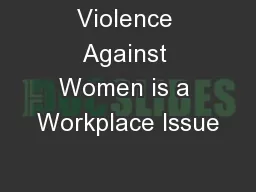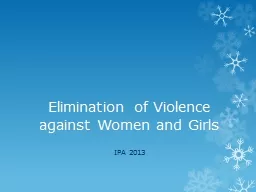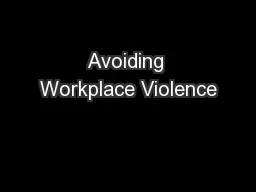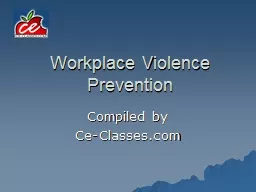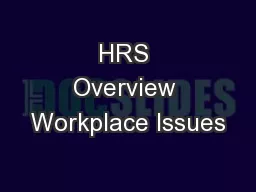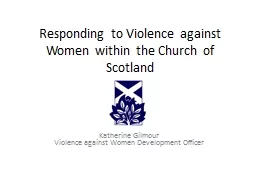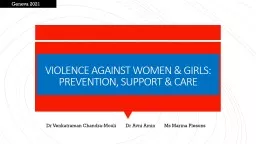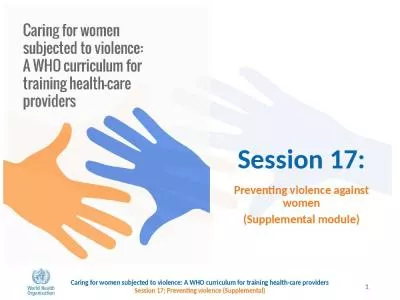PPT-Violence Against Women is a Workplace Issue
Author : phoebe-click | Published Date : 2017-07-03
A presentation for employers Domestic or Family Violence is Domestic or family violence is an abuse of power by a partner or expartner or family member It takes
Presentation Embed Code
Download Presentation
Download Presentation The PPT/PDF document "Violence Against Women is a Workplace Is..." is the property of its rightful owner. Permission is granted to download and print the materials on this website for personal, non-commercial use only, and to display it on your personal computer provided you do not modify the materials and that you retain all copyright notices contained in the materials. By downloading content from our website, you accept the terms of this agreement.
Violence Against Women is a Workplace Issue: Transcript
Download Rules Of Document
"Violence Against Women is a Workplace Issue"The content belongs to its owner. You may download and print it for personal use, without modification, and keep all copyright notices. By downloading, you agree to these terms.
Related Documents

